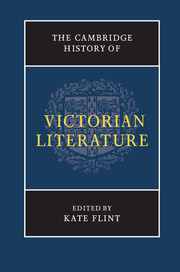Book contents
- Frontmatter
- Introduction
- PART I AUTHORS, READERS, AND PUBLISHERS
- PART II WRITING VICTORIA’s ENGLAND
- PART III MODES OF WRITING
- 7 Lyric and the lyrical
- 8 Epic
- 9 Melodrama
- 10 Sensation
- 11 Autobiography
- 12 Comic and satirical
- 13 Innovation and experiment
- 14 Writing for children
- PART IV MATTERS OF DEBATE
- PART V SPACES OF WRITING
- PART VI VICTORIAN AFTERLIVES
- Select bibliography
- Index
14 - Writing for children
from PART III - MODES OF WRITING
Published online by Cambridge University Press: 28 March 2012
- Frontmatter
- Introduction
- PART I AUTHORS, READERS, AND PUBLISHERS
- PART II WRITING VICTORIA’s ENGLAND
- PART III MODES OF WRITING
- 7 Lyric and the lyrical
- 8 Epic
- 9 Melodrama
- 10 Sensation
- 11 Autobiography
- 12 Comic and satirical
- 13 Innovation and experiment
- 14 Writing for children
- PART IV MATTERS OF DEBATE
- PART V SPACES OF WRITING
- PART VI VICTORIAN AFTERLIVES
- Select bibliography
- Index
Summary
During Victoria’s reign, works written primarily for children became both more numerous and more heterogeneous. As printing technology continued to improve and to lower production costs for books and magazines, and as younger and poorer segments of the population became literate, authors, publishers, and purchasers were increasingly likely to define children as a distinct audience. Or, more accurately, one might say that they constituted increasingly significant multiple audiences, delineated not only by age but also by gender, social class, and religion. The ever-expanding number of print texts available to the young, and the growing belief among producers and purchasers that a precise sense of one’s audience was important to success, led to the creation of a remarkably diverse – and often innovative and sophisticated – body of writing for children. The extraordinary range in tone, content, physical format, and stylistic and narrative characteristics reveals a culture that took childhood unusually seriously and saw children and their needs in many different ways.
The polyphony of children’s literature
Victorian children’s texts emerged from the clash between two ways of understanding childhood: the concept that children are adults’ moral inferiors, in need of substantial guidance if they are to mature into productive and virtuous citizenship, and the concept that civilization is corrupt and that children, not yet implicated in its inexorable sullying of humankind, are superior to adults in their innocence, enjoyment of simple pleasures, and willingness to imagine and trust.
- Type
- Chapter
- Information
- The Cambridge History of Victorian Literature , pp. 311 - 328Publisher: Cambridge University PressPrint publication year: 2012
- 1
- Cited by



